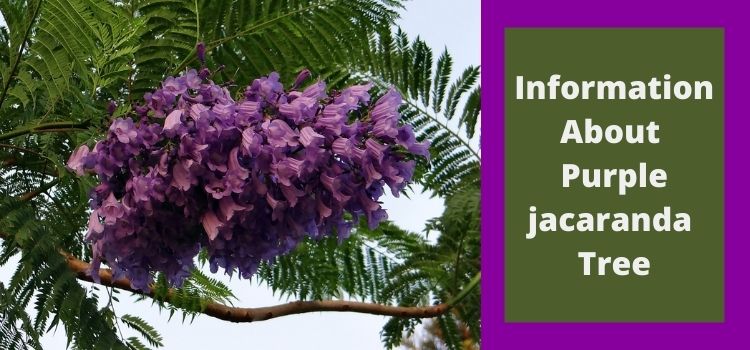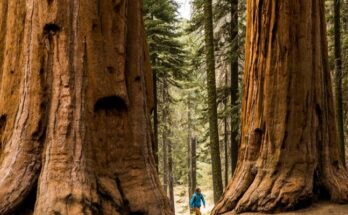|
Getting your Trinity Audio player ready...
|
All About Jacaranda Tree
Jacaranda is a variety of 49 species of flowering plants in the family Bignoniaceae, native to tropical and subtropical regions of the South Americas and the West Indies. They are grown in warmer parts of the world and in greenhouses for their showy blue or purple flowers and attractive leaves of opposing pairs.
Jacaranda is a beautiful tropical variety with fragrant, trumpet-shaped purple flowers. Its leaves can reach up to 20 inches long. Usually planted between fall and spring, jacaranda can be considered semi-evergreen or deciduous depending on the climate in which it is grown.
The tree grows quickly, adding up to 3 meters per year for the first few years of its life, with most of the flowering occurring from late spring to early summer (although the tree can bloom anytime in warmer regions). However, only fully grown jacaranda trees have flowers.
Jacaranda Tree Scientific Classification
table, th, td { border:0.5px solid black; }
| Classification Type | Classification Status |
|---|---|
| Common Name | Jacaranda tree, black poui, blue jacaranda |
| Botanical Name | Jacaranda mimosifoila |
| Bloom Time | Spring, summer |
| Family | Bignoniaceae |
| Plant Type | Tree |
| Mature Size | 25–50 ft. tall, 15–30 ft. wide |
| Native Area | South America |
| Soil Type | Sandy, well-drained |
| Soil pH | Neutral to acidic |
How to Plant and Care of Jacaranda Tree

First, choose the location of your tree wisely. Plant the tree in an uncovered area with sandy soil and full sun. Keep the soil intensely moist by soaking it with a hose for half an hour but allowing it to dry out between watering.
Caring for a jacaranda almost always involves pruning. The small branches should be cut in early spring to bring out the flowers to their best advantage. Cut off the vertically growing suction cups, leaving one main stem with a few main branches coming out of the center. Cut off any excess branches to prevent the weight of the tree from splitting the trunk.
Caring for a jacaranda almost always involves pruning. The small branches should be cut in early spring to bring out the flowers to their best advantage.
Information About Jacaranda Tree Leaves

The leaves are the medicinal parts. They are somewhat leathery, 1 to 2 inches long, whole or nearly so, elliptical, lanceolate, or oblong; sloping at the base or almost pointed at both ends, smooth and dark brown above, lighter below, strongly sinewy and velvety woolly. The surfaces are littered with sebum glands—slight odor; bitter-tart taste.
Jacaranda tree leaves are used in many ways, and some are using their oil made from leaves, roots, or flowers. Others use an aqueous extract of these same parts instead, be it internal or external use.
There are Four Types of Jacaranda Tree

Here we have mentioned four types of Jacaranda trees like blue jacaranda tree, yellow jacaranda tree, purple jacaranda tree, and pink jacaranda tree.
1. Blue Jacaranda Tree

‘Bonsai Blue’ is a relatively new dwarf variety that is 10-12 feet tall and 6 -8 feet wide.
Blue jacaranda trees are an excellent choice for large outdoor areas in warm climates. They are resistant to pests and disease and are moderately drought tolerant (although they require watering during prolonged periods of drought).
Jacaranda branches are arched and form an inverted canopy in the shape of an umbrella. In addition, the roof usually lets in diffuse light, which allows grass to grow under the tree. Be aware, however, that the tree may have large roots on the surface that can disrupt walkways or nearby structures.
2. Yellow Jacaranda Tree

A beautiful tree, just plain bright with masses of colorful yellow flowers in late summer. The leaves of the tree are pinnate and consist of leaflets 1 to 3 inches long. This trendy tree can reach heights of up to 50 feet in height if distributed evenly. Tipuana tipu is known for its use as a shade tree that attracts butterflies.
The growth rate of Yellow Jacaranda is highly dependent on the type of soil, sun exposure, temperature, and other factors. Therefore, some leaves are often cut before shipping to reduce sweat and travel stress.
3. Purple jacaranda Tree

The purple refers to the color of the flowers of Jacaranda trees which bloomed at that time and have been extensively planted throughout that district. When their flowers fall off the tree in the summer session, they leave a beautiful blanket of flowers that cover the ground. Jacaranda trees are fast growers that reach up to 25 to 50 feet high and 30 feet wide.
They are hardy up to 25 degrees and can withstand lower temperatures as they age. They’re not fussy about soil pH, but they like well-drained soils. It’s best to plant them in a sunny spot with regular watering for good growth and flowering results.
4. Pink Jacaranda Tree

The pink jacaranda varies widely in size depending on where it grows. Trees that grow in humid locations can reach 40 feet, while trees in very dry rocky areas can only reach 10 to 15 feet. The dark gray bark is sometimes peeled like a sycamore, which is decorative. Well-drained sandy soil and sun are preferred for better growth. They are carried in large, drooping panicles and appear before new leaves emerge. The lower lip of the crown is crisscrossed with red markings that contrast with the general pink hue.
Caring for a jacaranda almost always involves pruning. The small branches should be cut in early spring to bring out the flowers to their best advantage. Here we have discussed all the jacaranda tree and their types; if you have any query comment below.
Must Read: Information About Catalpa Tree



